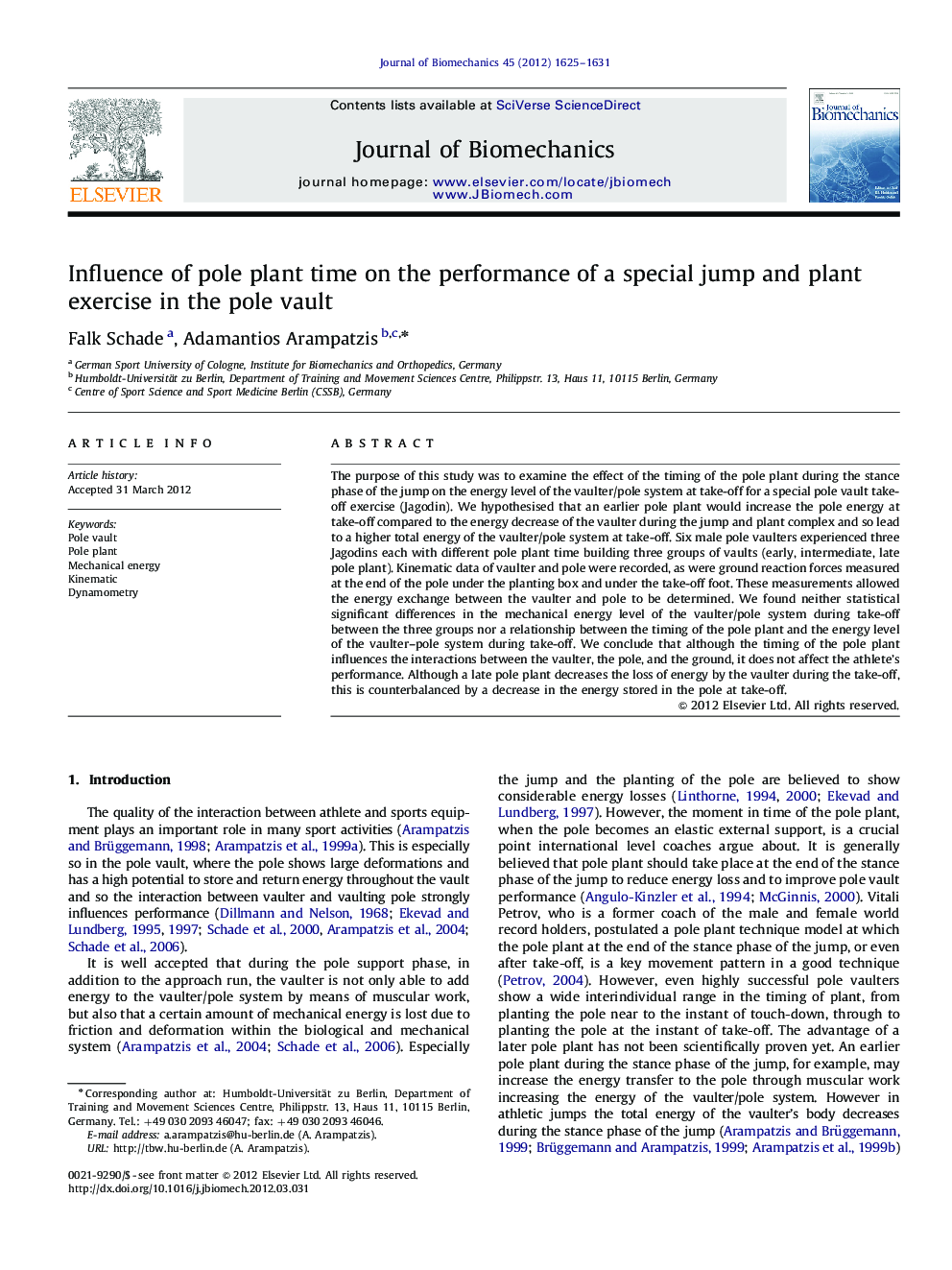| Article ID | Journal | Published Year | Pages | File Type |
|---|---|---|---|---|
| 10432292 | Journal of Biomechanics | 2012 | 7 Pages |
Abstract
The purpose of this study was to examine the effect of the timing of the pole plant during the stance phase of the jump on the energy level of the vaulter/pole system at take-off for a special pole vault take-off exercise (Jagodin). We hypothesised that an earlier pole plant would increase the pole energy at take-off compared to the energy decrease of the vaulter during the jump and plant complex and so lead to a higher total energy of the vaulter/pole system at take-off. Six male pole vaulters experienced three Jagodins each with different pole plant time building three groups of vaults (early, intermediate, late pole plant). Kinematic data of vaulter and pole were recorded, as were ground reaction forces measured at the end of the pole under the planting box and under the take-off foot. These measurements allowed the energy exchange between the vaulter and pole to be determined. We found neither statistical significant differences in the mechanical energy level of the vaulter/pole system during take-off between the three groups nor a relationship between the timing of the pole plant and the energy level of the vaulter-pole system during take-off. We conclude that although the timing of the pole plant influences the interactions between the vaulter, the pole, and the ground, it does not affect the athlete's performance. Although a late pole plant decreases the loss of energy by the vaulter during the take-off, this is counterbalanced by a decrease in the energy stored in the pole at take-off.
Related Topics
Physical Sciences and Engineering
Engineering
Biomedical Engineering
Authors
Falk Schade, Adamantios Arampatzis,
